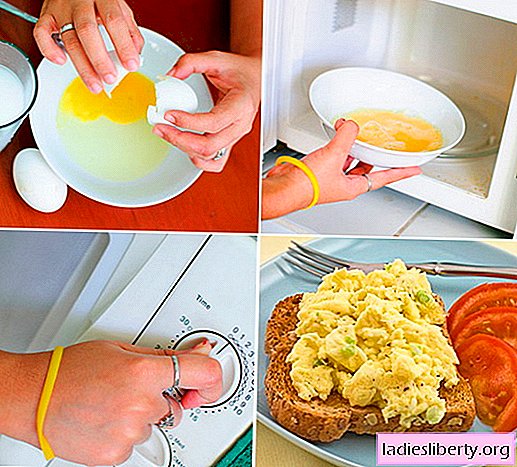
Treatment of periodontal disease at home is possible when it comes to preventing it.
Gingvitis, periodontitis, as well as a number of other serious problems with teeth are treated precisely at home.
To do this, you only need to know the diagnosis and get the "go-ahead" for treatment from a qualified dentist.
Periodontal disease: causes and symptoms
Therapy for inflamed periodontal disease begins with the correct diagnosis, since the disease, commonly referred to by the people (and some "backward" doctors) as periodontal disease, is actually periodontitis. Periodontal disease in the true sense of the term, is a degenerative change in bone-articular tissue. Unfortunately, such changes are not treated, they can only be suspended.
Modern dentistry calls inflammation of tooth tissues periodontitis, since it is the end of "-itis" that reflects the inflammatory process. Timely diagnosed periodontitis and proper treatment will prevent tooth loss and periodontal disease that is no longer treatable.
Symptoms of periodontal disease
The disease begins unnoticed. The patient sometimes experiences bleeding and soreness of the gums, sometimes suffers from acute conditions such as pocket abscesses. Later, bad breath appears, the gums swell and acquire a red-violet color.
Treatment of periodontal disease at home usually helps in such cases to quickly cope with the problem. If the symptoms are not given meaning that the gum sensitivity "goes away", the bone tissue is destroyed by periodontal disease and the teeth fall out.
Causes of periodontal disease
Plaque is not only the cause of caries - the bacteria in it cause periodontal disease. Unfortunately, people do not attach great importance to plaque, and it is precisely it that leads to tooth loss in the long run.
The open mucous membranes of our body are “benevolent hosts” for microbes, therefore, with each such “entrance” there are special “protective terminals” of the immune system (in the mouth, rectum, genitals, ear and nasal cavities). For example, in the oral cavity, tonsils are such a protector.
But bacteria settle not only in the mucous membranes, but even on bone tissue, for example, teeth. Healthy periodontal tissue prevents bacteria from entering, but the situation changes when the gums become inflamed. Through swollen and bleeding gums, bacteria enter the circulatory system and develop in plaques, where they are inaccessible to immune cells. Constantly multiplying, bacteria settle in the inflamed areas, and the immune system can no longer cope with so many of them.
At this stage, the patient with periodontal disease is already worried about the constant bleeding and soreness of the gums, exposed neck of the teeth. Ignoring these symptoms in the future leads to heart problems, and in pregnant women - even to premature birth.
Most people are familiar with gum disease, which is slightly sore and bleeds.
The most common causes of gum disease are:
• natural plaque that is not regularly removed;
• plaque caused by the protruding edges of the fillings or loose fit edges of the dental crowns;
• plaque associated with hormonal disorders;
• gum disease during menstruation;
• gum disease in patients with diabetes
• gum disease during pregnancy;
• gum disease associated with abnormal blood composition.
Once the cause, that is, the plaque, is removed, gum disease usually goes away on its own. However, repeated inflammation of the gums can lead to abscesses, loss of bone mass and, subsequently, tooth. Fortunately, all these factors can be neutralized, because periodontal disease responds to treatment even at home.
Periodontal disease - treatment at home: medication
In the past, antibiotics were prescribed for periodontal disease immediately, as an integral part of dental treatment. But reliable scientific research on this topic has not yet been conducted, therefore, the prophylactic use of antibiotics is currently limited, and is prescribed only to patients with proven heart disease or a dangerous medical condition.
The main methods of treating periodontal disease at home.
The main task is to prevent the formation of plaque:
• First of all, to improve the technique of brushing your teeth, paying attention to hard-to-reach places;
• use dental floss after each meal;
• rinse your teeth with a medical antiseptic, at least at night;
• correct (if necessary) a bite of teeth;
• find a conscientious dentist who makes beautiful, firm edges on crowns and carefully polishes fillings.
Rinsing as the main way to treat periodontal disease at home
Until now, rinsing with water is not universally accepted as the main part of the treatment of gum disease. Some dentists claim that bacteria “wash out” even deeper into the gums. This is nonsense, because bacteria can travel through blood vessels anyway, and, secondly, bacteria themselves are harmless - only when they accumulate in large numbers, they cause periodontal disease and / or caries.
The toothbrush removes only plaque on the upper part of the gums, and with the help of regular water rinses, fresh plaque is washed out from the entire oral cavity.
In the first days of rinsing, the gums can bleed and hurt even more, but you do not need to stop the procedure - periodontal disease responds quickly to treatment at home. Just a few days, and the inflammation begins to subside.
Antiseptic drugs for periodontal disease
Doctors often recommend antiseptic drugs such as chlorhexidine or furatsilina solution to treat the affected area. They are effective in the acute phase of the disease, as they prevent bacteria from multiplying.
Antibiotics in the treatment of periodontal disease
Local antibiotics, usually presented in the form of a gel or powder that fits in the gingival pocket, are a form of adjunctive therapy. Dentists can prescribe antibiotics after a course of deep cleansing to prevent relapse, or when deep cleansing and rinsing are ineffective. Antibiotics are not intended for use without first removing bacterial deposits (calculus or tartar). Overuse of antibiotics often leads to abscess - a very painful type of infection that can only be opened surgically.
Probiotics
Probiotics for the oral cavity containing Lactobacillus Reuteri Prodentis are presented as lozenges with beneficial bacteria. They are considered effective in the treatment of gingivitis and periodontal disease to restore the natural balance in the mouth after topical use of antiseptics and antibiotics.
Periodontal disease - treatment at home: folk remedies
Herbal infusion
The main treatment at home is regular frequent rinses. Alternative rinses can be chosen different, only their strong antibacterial effect is important. As the most common herbal rinse, an infusion of oak bark, yarrow, sage, chamomile, nettle and St. John's wort is used. Pour one tablespoon of each ingredient into the dishes, mix, pour 600 ml of boiling water and insist for about half an hour. Rinse your mouth before going to bed.
Sea salt
Dilute a small amount of sea salt in a glass of warm water. Rinse your mouth for 30 seconds and spit it out. Repeat until solution is complete. Salt water will remove inflammation from the gums and draw the infection out of abscesses. For prevention, rinse your mouth with salt twice a day after brushing your teeth.
Aloe vera
This succulent is full of medicinal properties that heal and treat a lot of diseases and ailments. Its anti-inflammatory, antibacterial and antimicrobial properties very quickly kill bacteria, preventing the spread of infection.
Application. From a fresh leaf of aloe vera, cut off the edges and cut the leaf into two parts. Rub the gel side of the gum leaf and teeth and massage for five minutes. Rinse your mouth with warm water. Repeat three times a day. Gums heal in no time.
Turmeric
Take equal amounts of turmeric powder, salt and powder from the leaves of dried Indian melia. Mix and store in a jar. Gently massage the mixture of gums and teeth for several minutes, three times a day. Rinse your mouth with warm water. The antibacterial and anti-inflammatory properties of turmeric not only destroy the infection, but also treat the gums and strengthen them. The bleeding will stop soon and the pain will go away.
Alum
Alum kills a bacterial infection, preventing the formation of plaque and tartar and prevents gum disease.
Application. Take one teaspoon of alum powder and mix it with a quarter teaspoon of salt. Add a few drops of mustard oil to the mixture and massage the gums and teeth with this mixture for five minutes. Rinse your mouth with warm water. Use the product after each meal until completely cured.
Flossing
If periodontal disease has developed, treatment at home without the use of dental floss is not possible. It is a thorough cleansing of the interdental space that prevents bacteria from entering the soft tissues and their infection.
Tea bags
Hold the tea bag in boiling water for 2-3 minutes, remove and let it cool to a temperature that can be tolerated on the gums. Hold the tea bag on the affected parts of the gums for five minutes. At this time, tannic acids from tea effectively fight gum infections. Lotions from a tea bag are more effective than just drinking tea - substances work better and teeth remain unstained with strong tea leaves.
Cranberry and Lemon Juices
Cranberry juice prevents bacteria from sticking to the teeth, so dentists recommend drinking 100 ml of unsweetened cranberry juice every day.
Lemon juice is used to make healing paste, adding a little extra sea salt to it. A well-mixed paste is applied to all the gums and left for several minutes. Rinse your mouth thoroughly after the procedure.
Lemon juice has an anti-inflammatory and antibacterial effect, necessary for periodontal disease for treatment at home.
Baking soda
Brush your teeth with baking soda - it neutralizes the acid in your mouth, reducing the risk of tooth decay and gum disease. A little soda on the toothbrush and warm water is a great preventative. You can use it after the procedures with acidic products described above.
Tea tree oil
Toothpaste with tea tree oil quickly kills bacteria in plaque and eliminates it. If there is no ready-made paste, you can simply add a drop of oil to the brush using a regular paste. The oil should be treated carefully, do not swallow it, as it causes stomach irritation and diarrhea.
Periodontal disease - treatment at home: what can not be done
Any action that could damage the gums is strictly forbidden - rough food or a hard toothbrush. The less mechanical damage there is in the gum, the sooner the inflammation will subside.
In the diet, you need to adhere to sparing products - do not abuse spices and sweets, since the former irritate the mucous membranes, and the latter contribute to the reproduction of pathogenic microflora in the oral cavity.
It is worth limiting the use of fatty foods and alcohol.
With periodontal disease, treating at home, you can not neglect the advice of dental professionals, because they will help save your teeth from falling out!











